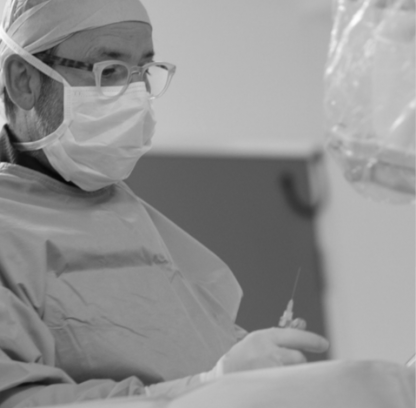SACROILIAC JOINT BLOCK
A sacroiliac joint block, or sacroiliac joint injection (SJI) is an injection which is primarily used to either diagnose or treat low back pain and/or sciatica symptoms associated with sacroiliac joint dysfunction.
The sacroiliac joints lie next to the spine and connect the sacrum (large triangular bone at the base of the spine) with the hip on both sides. There are two sacroiliac joints, one on the right and one on the left. Joint inflammation and or/dysfunction in this area can cause pain.
WHY HAVE AN SJI?
A sacroiliac joint injection may be given to diagnose the source of a patient's pain, and to provide therapeutic pain relief.
At times, these are separated and a patient will undergo a purely diagnostic or therapeutic injection, however two injections are always done at the one time.
DIAGNOSIS
A diagnostic SJI is used to confirm a suspected diagnosis of sacroiliac joint dysfunction. This is done by numbing the sacroiliac joint with local anaesthetic. The injection is performed under fluoroscopy (X-ray guidance) for accuracy, and contrast is used once the needle is in the joint to ensure proper placement and spread of medication. Numbing medication is then injected into the joint.
Patients are then asked to perform activities which normally cause pain. If pain is reduced by 75-80% for the normal duration of the anaesthetic, an SI joint dysfunction diagnosis is made. A second injection (time release cortisone) is performed to confirm the diagnosis. If this injection also reduces pain by 75-80%, there's a reasonable degree of medical certainty that the SI joint is the pain source.
PAIN RELIEF
A therapeutic SI joint injection is done to provide relief of the pain associated with sacroiliac joint dysfunction. The injection is performed using the same technique as diagnostic injections, except that anti-inflammatory medication (corticosteroid) is included to provide pain relief by reducing inflammation in the joint.
If patients experience prolonged pain relief after a therapeutic SJI, they can begin a physical therapy and rehab program to further reduce pain and return to normal activity. If the injection successfully reduces or eliminates pain for a longer duration, it can be repeated up to 3 times per year, along with a physical therapy and rehabilitation program.
SIDE EFFECTS AND RISKS
Patients usually stay for 30 minutes after the injection to ensure there are not immediate complications or reactions such as allergic reactions or leg weakness/numbness. Your doctor will determine when it is safe to go home.
Following a diagnostic or combination diagnostic/therapeutic SJI, your pain level is assessed by performing pain-provoking activities. The percentage of pain relief is documented over two weeks and a physical exam is performed - a positive response is defined as at lease 75% improvement of painful activity symptoms. A second positive injection suggests the sacroiliac joint is the source of pain.
Individual recommendations may differ, but the following are typical:
drink lots of water to flush the fluoroscopy dye out of the body
do not perform excessive activities on the day of the procedure, especially if sedation was administered
a list of signs or symptoms that warrant immediate medial attention will often be provide to you as a part of the discharge procedure
THE SJI PROCEDURE
The sacroiliac joint injection procedure is usually performed in an operating room or a dedicated procedure room. The entire procedure usually takes only minutes, and then you go home the same day.
POSSIBLE RISKS OF SJI
Risks tend to be relatively minor and occur infrequently. Typical risks include:
possible allergic reactions to medications used in the injection
bruising and/or soreness at the injection site
infection at the injection site, deeper tissues, or in the joint
MORE ON THE PAIN CHART
You should rate your pain between 0 and 10 before your injection, and after for 6 hours, firstly in 30 minute intervals and then hourly intervals. Ratings should be conducted in terms of movements and how you feel doing the things that most aggravate the pain.




